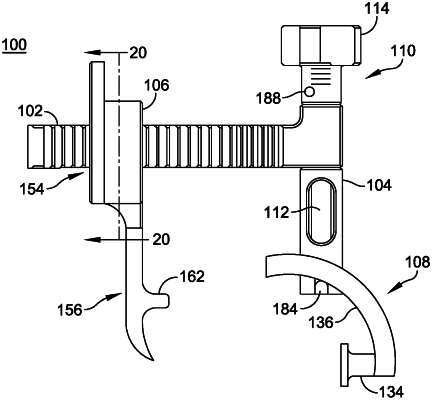| CPC A61B 17/56 (2013.01) [A61B 2017/565 (2013.01); A61B 2017/567 (2013.01)] | 15 Claims |

|
1. An apparatus for correcting bunion deformity, the apparatus comprising:
an elongated member extending from a first end to a second end and having a bore at the first end;
a first arm member having an arm axis and coupled to the first end of the elongated member and extending in an orthogonal direction from the elongated member so that the arm axis extends in the orthogonal direction, the first arm member including a bore extending therethrough and having two prongs separated by a gap that each define an arcuate external groove at a distal end;
a second arm member configured to engage the elongated member such that the second arm member can translate along the elongated member between the first and second ends of the elongated member, the second arm member including an attachment portion configured to translatably engage the elongated member and an extension extending from the attachment portion in the same orthogonal direction as the first arm member, wherein a distal end of the extension is configured to engage a bone during use;
a rotation guide including an arcuate portion slidingly coupled to the arcuate external grooves at the distal end of the first arm member such that the rotation guide is configured to rotate with respect to the first arm member when slid within the arcuate external grooves, the rotation guide defining a bore having a longitudinal axis and configured to receive a k-wire along the bore's longitudinal axis; and
a locking mechanism comprising a knob and a locking post, the locking post disposed within the bore of the elongated member and the bore of the first arm member, threadably engaged with the knob, and having two locking tabs extending from the locking post, the two locking tabs disposed between the two prongs,
wherein rotation of the knob causes the two locking tabs to engage the arcuate portion of the rotation guide to restrain rotation of the rotation guide, and
wherein rotation of the rotation guide with respect to the first arm member causes the longitudinal axis to rotate about a rotation axis.
|